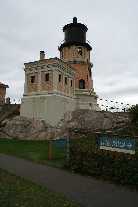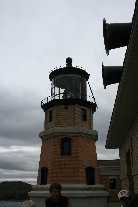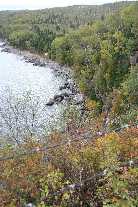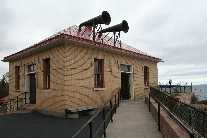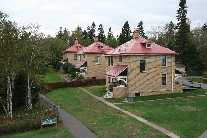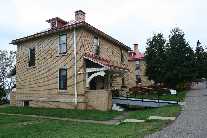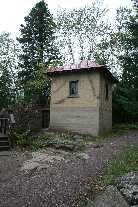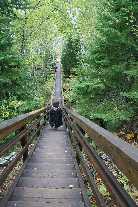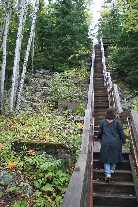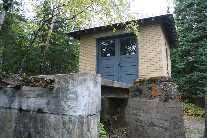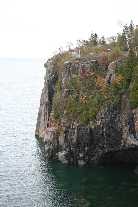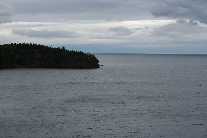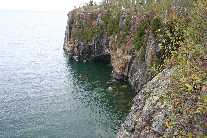Split Rock Lighthouse 2007
(Click on Images for Larger Picture)
|
If you get a chance to visit a lighthouse, I strongly recommend it. This
year we decided to stop by the Split Rock Lighthouse. Although the light
still functions, it is for show only. Most modern shipboard navigation
involves the use of radar and GPS systems and has made the use of lighthouses
virtually obsolete.
|
|
With the exception of the steam lift, tram, and one of the lighthouse keepers
garages, most of the buildings and support facilities remain. Above is the
building that housed the steam engine for the fog horns, and the two pictures to
the right are of the lighthouse keeper and his assistants' homes.
|
(Click on Images for Larger Picture)
|
I mentioned a tram before and above is what remains of it today. In the
early days, the keepers would have to haul up supplies from the bay below the
lighthouse. Over time, a tram system was constructed that helped
them in this process. The building in the first picture housed the
equipment to hall the cars up the track. The second picture is the view
down the path to the bay, and the last is looking back up.
|
(Click on Images for Larger Picture)
|
Here is another picture of the tram building. The second picture is of the
lighthouse from the bay below.
|
(Click on Images for Larger Picture)
|
The main reason for the development of the lighthouses was to prevent or cut
down the number of shipwrecks due to low visibility of the rocky shores.
One example of this is in the first picture in the
second row above. There are marker buoys in
the picture that show where a ship went down in a
storm. Of course there is one questions that I
have not answered and that is, how did they get the
building materials to the site in order to build the
lighthouse? Well, it wasn't by the long path just
west of the lighthouse. It was up the side of
this cliff, in the first picture, by the use of a steam engine and lift.
For many years, this was the only method to get to the lighthouse. As for
getting the engine to the top, the construction workers build a sled, put the
engine on it, and it pulled itself up the long slope from the bay to the west.
|
|
